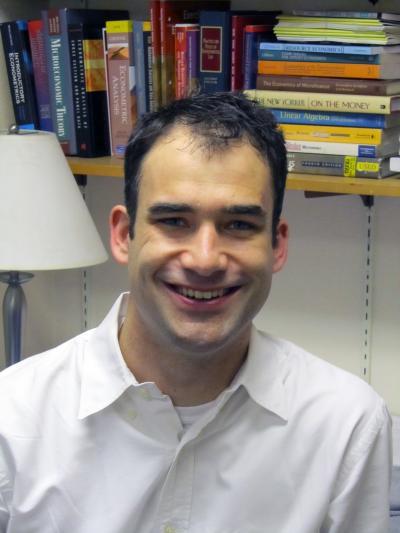EUGENE, Ore. -- Each October, the color pink marks the arrival of National Breast Cancer Awareness Month. Media coverage, product promotions and even the football gridirons showcase the national effort to promote screenings and early detection of the cancer that 200,000 American women are diagnosed with each year.
New research from the University of Oregon examined more than 30 years of cancer registry data to determine if October events related to National Breast Cancer Awareness Months (NBCAM) lead to increases in breast cancer diagnoses in the following month of November.
The study, co-authored with George Mason University epidemiologist Kathryn Jacobsen, is titled, "Health Awareness Campaigns and Diagnosis Rates: Evidence from National Breast Cancer Awareness Month." It was published in the January 2011 Journal of Health Economics.
The study found that NBCAM events were effective at increasing November diagnoses during the mid-1990s when the awareness movement was expanding across the U.S. and was recognized by the federal government as an official event. In more recent years, researchers found little evidence of an increase in November diagnoses following October-time NBCAM events.
According to researchers, that may be a good thing. "In addition to showing a diminishing effect from NBCAM, the data indicate that the distribution of diagnoses over the calendar has become more uniform. Both of these findings suggest that women are now getting diagnosed as a result of routine screenings, as opposed to event-driven screenings. This is a good thing, since routine screening is likely to lead to earlier diagnoses," said Grant Jacobsen, a professor in the UO department of planning, public policy and management.
For the study, the researchers studied data from the Surveillance, Epidemiology, and End Results (SEER) Registries database from five states and four metropolitan areas, the most complete record of diagnoses available.

Grant Jacobsen, assistant professor of planning, public policy and management at the University of Oregon, has found a lessening impact of October awareness campaigns on breast cancer but also a positive swing toward getting testing done throughout the year.
(Photo Credit: University of Oregon)
The research found that before NBCAM was well established in the early 1990s, there were large fluctuations in the diagnosis of breast cancer. Most notable to the researchers were significant spikes in 1974 and 1987 coinciding with announcements by first ladies Betty Ford and Nancy Reagan when each disclosed a breast cancer diagnosis.
"Our findings indicate that during the period before NBCAM, when breast cancer was rarely talked about, celebrity diagnoses reminded women of the risk of breast cancer and led some to seek out screening, and consequently resulted in increases in diagnoses," said Kathryn Jacobsen.
According to Kathryn Jacobsen, breast cancer awareness was a rich subject for the study because it is one of the oldest and most well-established awareness campaigns in the U.S.
"So much has changed from 1987 when only 30 percent of women reported having a mammogram in the previous two years," she said. "Communities came together -- women and men -- to talk about breast cancer, and screenings among the target group increased to 70 percent by 1999."
"Our study is actually good news for breast cancer advocacy. It suggests that breast cancer advocacy efforts have increased awareness of the need for regular screening among American women," said Grant Jacobsen. "There are other associated benefits beyond initial screenings that should perhaps be expanded now that the awareness campaign is mature."
Breast cancer organizations now raise significant funds for research and facilitate support groups and connections for women with breast cancer and their families and friends. As the study concludes, these activities broaden the campaigns beyond screenings, which have been successful among the target audience.
Source: University of Oregon